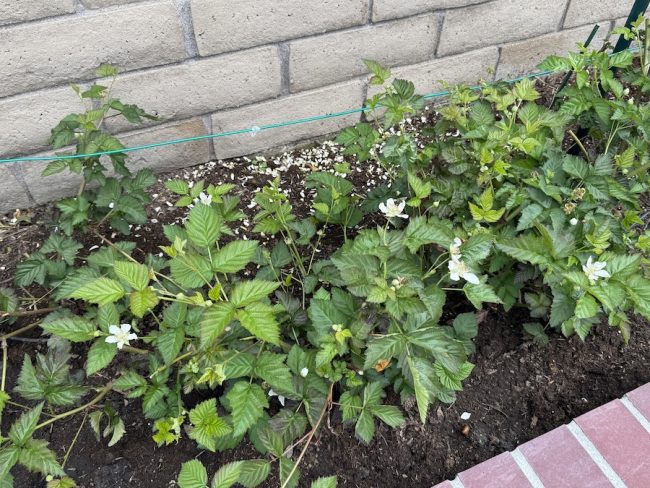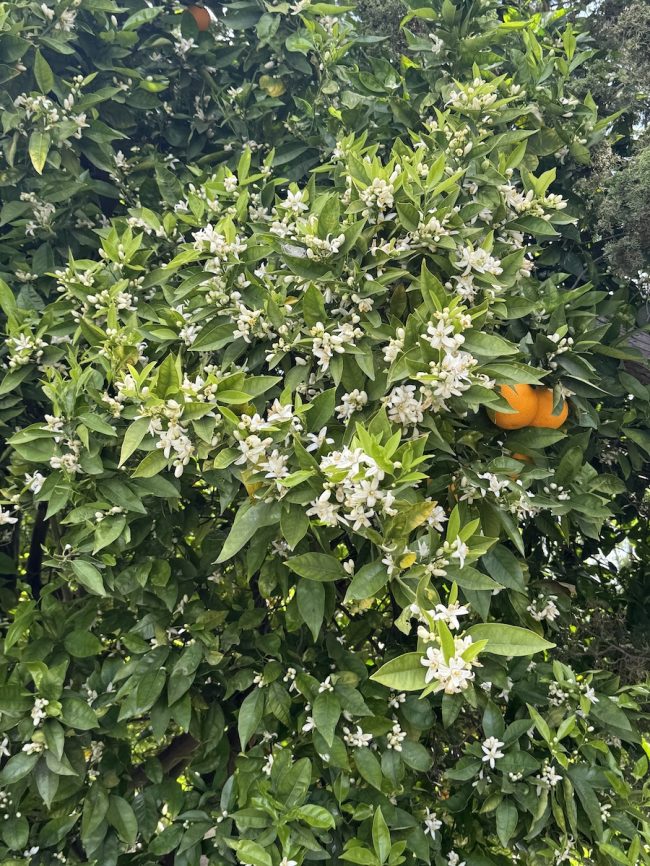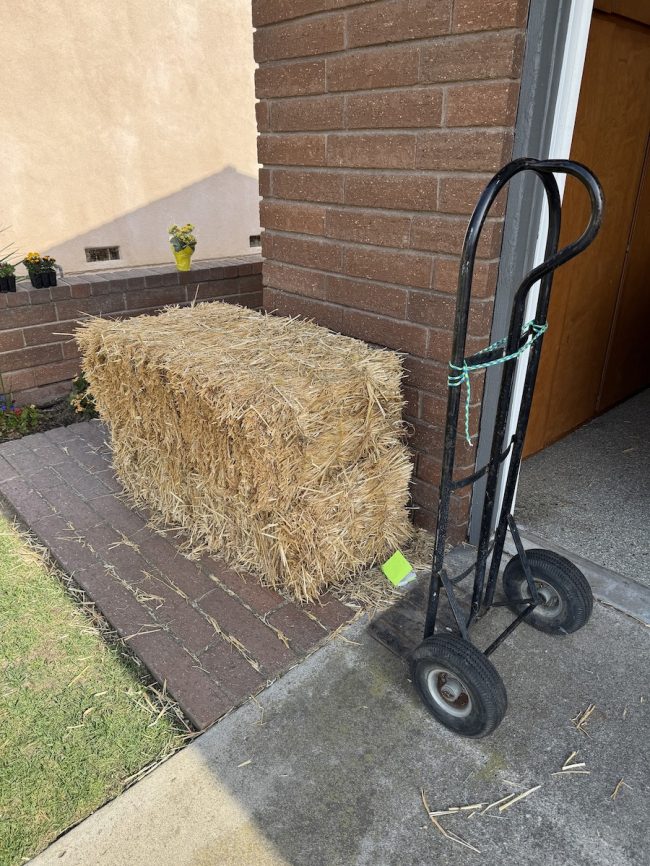Estimated reading time: 4 minutes

It’s Friday; isn’t that just ducky??
We went to the gym to be bent and twisted to feel better! We did feel better, and to prove that, we headed to the garden and spent hours towing the barge and lifting the bales!
We have several bags of “red bark,” which we will spread, making the garden greenery stand out against the red background.

The bark stays red for almost a year before turning color to brown.
When our hanging plants need help, we have Carlos plant them in the ground and they take off again!

He was tired of “hanging around”.
The pineapple is approaching one year old, so it has another six months to a year before we should see a real pineapple form. It takes roughly 18 months to 3 years for a pineapple plant to mature and produce fruit, depending on the method of planting (crown, pups, or slips) and the climate.

It is healthy, and he seems to like it in the pot.
The day was fabulous, perfect for contemplating life choices or trying to figure out if that cloud looked more like a dinosaur or an oversized cotton candy. With huge clouds passing overhead, I half expected one of them to drop a giant ice cream cone any minute. If it can rain cats and dogs, why not dessert, right?

We will not see rain, but the wind can be blustery!
The planters we use for berries are doing well, and the berries bloom like mad. We figure the six bags of acid potting soil will help this along substantially. We have raspberries, blackberries, boysenberries, and other wild berries planted in this area.
A boysenberry combines a loganberry, red raspberry, and blackberry. It put California’s first theme park, Knott’s Berry Farm, on the map. The boysenberry is named after Rudolf Boysen, whose cross-breeding experiments produced it.

The soil is perfect for growing the little gems.
In another month or so, we will collect these beauties for our jam!

Eaten right off the vine on a warm sunny afternoon is pure heaven!
Our neighbor’s orange tree is going wild again. We are picking the fruit every day so we have fresh orange juice for breakfast. Oranges are technically berries. They originated in China, and there are over 600 varieties, with Brazil being the largest producer. The orange blossom is the fragrant flower of the orange tree, used in perfume making and as a flavoring in desserts and baking goods. Our entire garden smells of oranges this time of year.

The trees will be loaded in a few months!
Later in the afternoon, the clouds were still passing, but they were getting cold, and the temperature dropped into the low 60s. We were working hard, so we did not notice the temperature change until we stopped and sat down to rest.

Dramatic indeed!
We heard the delivery truck and three distinct “plops; our straw is here. We ordered three bales of straw from the local feed and tack store. For $10, they put it right on the driveway, so all I have to do is roll it to the backyard and stack it.

The hand-cart tires will be changed out to solid tires on Sunday!
Now we have plenty of munch to last all summer. Mulch, often made from organic materials like wood chips or bark, helps retain moisture, suppress weeds, and protect soil from erosion while improving soil health and aesthetics. We will use almost three bales during the summer to keep the veggie roots cool and keep the weeds down.

We wet the bales so any remaining seeds germinate before entering the garden!
We stayed home this evening as it has been a long day. We hit the swim spa for a few cycles before watching TV and hitting the “hay.”

